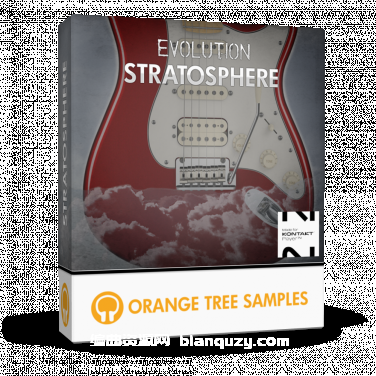 MAC AU x86 x64 – 3,19 GB | MAC VST x86 x64 – 3,19 GB | MAC AAX – 3,19 GB
MAC AU x86 x64 – 3,19 GB | MAC VST x86 x64 – 3,19 GB | MAC AAX – 3,19 GB
WiN VST x86 x64 – 3,18 GB | WiN AAX – 3,18 GB
Adam Monroe的Slap Bass是从Fender Jazz电贝司吉他,Carvin J99拾音器和GHS Boomers贝司弦采样而来的,直接放入Radial Pro48 DI Box和AMPEG Micro VR SVT AMP中。通过将E弦调低至D可获得更大的范围。
尽管在贝司的极高音域中,确实对弦的张力有所影响,但拍打音符已变得与流行乐演奏音色区分开来。用户可以在Amp和DI声音之间混合。 AMP通道更亮/更明亮DI通道提供了更多柔和的拍打低音声。
该插件在4音符轮循下具有10个力度层,动态范围在-15 db和-1 db之间,因为低音吉他通常是压缩信号,最终在现代录音中达到一定水平。对于D和G琴弦音符,拍速发音可在较高速度下触发,而巴掌发音可在较低速度下触发。省略了其他发音,因此该插件仅具有拍打低音声音-这样做是为了保留空间和音质-旧版的Adam Monroe的Slap Bass具有挑剔的表达,但力度层和通道较少。
定期用变性酒精清洁低音琴弦,因为金属的Boomer声音趋于迅速变暗。通过选择最佳的位置来开始采样新的弦乐,以确保在弦乐之间的音调过渡最小化而付出了痛苦。
对于大多数琴弦都记录有幻灯片,但是对于诸如开放琴弦之类的东西,或当向下或向上滑动会超出标准调音时,都将其记录下来。为了可用性,选择了主要和次要三分之二。以120 BPM的速度记录幻灯片。
Adam Monroe的Slap Bass的Kontakt版本已贬值(1.13.2020)。 VST,AU和AAX版本完全由AdamMonroeMusic编程。也是VSTi(虚拟仪器),音频单元或AAX插件的任何示例库中的目标都是尝试匹配Kontakt Player的性能。有了这个库,我们觉得我们已经做到了。
VST,AU和AAX版本包括更新的高性能算法,随着Adam Monroe Music发布的每台新虚拟乐器都在不断改进。例如,缓冲算法是双缓冲和多线程的,这意味着即使在速度较慢的计算机上,也可以以较低的延迟实现快速的缓冲性能。声音以纯净的C样式阵列进行保留和迭代。内存使用量与(已贬值的)Kontakt版本相当。由于VST / AU / AAX的代码基础牢固,因此您可以放心VST,AU和AAX版本将与(已弃用的)Kontakt版本一样好。 Mac VST,AU和AAX版本是单独的32-64版本(使用Catalina),并且Carbon GUI框架已被Cocoa取代,与OSX 10.9和更高版本兼容。
该库现在包括VST,AU和AAX版本的采样率转换。采样率转换是自动的,实时的,并支持44.1、48、88.2和96 kHz采样率。为什么要完全开发本机VST,音频单元或AAX版本?尽管功能强大,但Kontakt的完整版(运行第3方样本库必需)价格昂贵。开发任何人都可以使用的VST,AU和AAX版本并不会为开发Slap Bass库增加大量时间-大部分时间都花在了采样和处理样本上-因此,这真是轻而易举。
音频工程是创建VST / AU / AAX插件的重要部分,但是这种鼓耳的低音几乎没有得到处理。在这里和那里进行了轻微的eq调整,主要是为了使该乐器的音符音符音符相似。消除了一些噪音,以使与低音吉他电路和拾音器有关的“热度”趋于平稳。
版本v2.2 1/10/2020
***********************
自上一版本以来的改进:
* Mac Au / VST版本现在符合OS X Catalina代码签名和公证要求。
* Mac版本现在通过软件包安装程序安装。
* Mac版本和配置文件的资源现在放在vst和组件包的外部。这是因为Apple现在希望对事物进行代码签名:验证捆绑中的资源将花费很长时间,并且配置不能在内部,因为这会使代码签名失效。如果您不喜欢,请向Apple投诉!
*为需要它们的人维护单独的旧版(32位)Mac版本(OS X 10.9-10.14)
主页
adammonroemusic.com/slapbassvst/am-slap-bass-vst.html
Adam Monroe’s Slap Bass was sampled from a Fender Jazz electric bass guitar with Carvin J99 pickups and GHS Boomers bass strings, directly into a Radial Pro48 DI Box and an AMPEG Micro VR SVT AMP. An extended range was obtained by tuning the E-string down to a D.
“Slap” and “pop” articulations were carefully and meticulously recorded for each note, although in the extreme upper range of the bass, do to tension of the string, slap notes starts to become indistinguishable from pop articulations. The user can blend between Amp and DI sounds. The AMP channel is slightly brighter/edgier well the DI channel provides more of a mellow slap bass sound.
the plugin features 10 velocity layers at 4 note round-robin, and the dynamic range is between -15 db and -1 db, as bass guitars are typically compressed signals that end up somewhat level in modern recordings. For D and G string notes, pop articulations can be triggered at higher velocities with slap articulations being triggered at lower velocities. Alternate articulations are omitted, and thus the plugin only features a slap bass sound – this was done to preserve space and quality – the older version of Adam Monroe’s Slap Bass featured pick articulations but with less velocity layers and channels.
Bass strings were periodically cleaned with denatured alcohol, as the metallic Boomer sound tends to darken quickly. Pains were taken to ensure that the transition in tone between strings was minimized by selecting the best places to start sampling a new string.
Slides were recorded for most strings, but were omitted for things like open strings, or when sliding down or up would overshoot standard tuning. Major and minor thirds were chosen for the sake of usability. Slides were recorded at a tempo of 120 BPM.
The Kontakt version of Adam Monroe’s Slap Bass is depreciated (1.13.2020). The VST, AU, and AAX versions are programmed entirely by AdamMonroeMusic. The goal in any sample library that is also a VSTi (virtual instrument), Audio Unit, or AAX plugin is to attempt to match the performance of the Kontakt Player. With this library, we feel we have done just that.
The VST, AU, and AAX versions include updated, high-performance algorithms that have been improving with each new virtual instrument released by Adam Monroe Music. For example, the buffering algorithm is double-buffered and multithreaded, which means that buffering performance is fast, even on slower computers, and at lower latencies. Voices are held and iterated over in a pure, C-Style array. Memory use is comparable to the (depreciated) Kontakt version. Because of the solid VST/AU/AAX code base, you can feel confident that the VST, AU, and AAX versions will work just as well as the (depreciated) Kontakt version. Mac VST, AU, and AAX versions are separate 32-64 builds (with Catalina), and the the Carbon GUI framework has been replaced with Cocoa, compatible with OSX 10.9 and later.
This library now includes sample rate conversion for the VST, AU, and AAX versions. Sample rate conversion is automatic, real-time, and supports 44.1, 48, 88.2, and 96 kHz sample rates. Why develop native VST, Audio Unit, or AAX versions at all? Although a great piece of software, the full version of Kontakt (required to run 3rd party sample libraries) is expensive. Developing VST, AU, and AAX versions that anyone can use does not add significant time to the development of a Slap Bass library – most of the time is spent sampling and processing the samples – so it’s a real no-brainer.
Audio engineering is a large part of creating a VST/AU/AAX plugin, but the sound of this slap bass has barely been processed. Slight eq tweaks were done here and there, mostly so that the instrument would have a similar sonic footprint note-to-note. Some noise was removed to level out some of the “hotness” associated with bass guitar circuitry and pickups.
Release v2.2 1/10/2020
***********************
Improvements since last version:
*Mac Au/VST versions now conform to OS X Catalina code signing and notarization requirements.
*Mac versions are now installed via package installers.
*Resources for Mac versions and a config file are now placed outside of the vst and component bundles. This is because Apple wants things code-signed now: verifying resources in a bundle would take too long and the config can’t be inside because it would invalidate the code signature. If you don’t like it, complain to Apple!
*Maintaining separate legacy (32-bit) Mac versions for those who need them (OS X 10.9-10.14)





